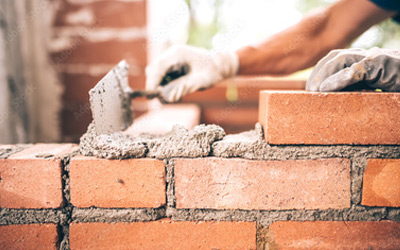
 Foundation cracks can be a homeowner’s worst nightmare. Left unchecked, they can lead to severe structural damage, causing safety concerns and expensive repairs. Understanding the causes of foundation cracks and knowing how to address them is crucial for maintaining your home’s stability and value. Here’s an in-depth look at foundation crack repair and how you can safeguard your property.
Foundation cracks can be a homeowner’s worst nightmare. Left unchecked, they can lead to severe structural damage, causing safety concerns and expensive repairs. Understanding the causes of foundation cracks and knowing how to address them is crucial for maintaining your home’s stability and value. Here’s an in-depth look at foundation crack repair and how you can safeguard your property.
Understanding Foundation Cracks
Foundation cracks can occur for several reasons, including soil movement, water infiltration, and natural settling of the house. It’s essential to identify the type of crack to determine the appropriate repair method. Generally, foundation cracks fall into three categories:
- Hairline Cracks: These are minor and often result from the natural curing process of concrete. While usually not a significant concern, they should be monitored for any changes.
- Vertical Cracks: Typically caused by settling, these cracks are common and usually not severe. However, they can allow water to seep into your basement, leading to potential moisture problems.
- Horizontal Cracks: These are the most serious and indicate severe structural issues, often caused by soil pressure against the foundation walls. Immediate attention is required to prevent further damage.
Steps for Foundation Crack Repair
Repairing foundation cracks involves several steps to ensure a durable and lasting solution. Here’s a comprehensive guide to the repair process:
- Inspection and Assessment: Begin with a thorough inspection to assess the severity of the cracks. Determine if they are structural or non-structural to decide the best course of action.
- Cleaning the Cracks: Clean the cracks to remove any debris, dust, or loose particles. This step ensures better adhesion of the repair material.
- Choosing the Right Repair Material: For minor cracks, a simple epoxy or polyurethane injection might suffice. These materials expand to fill the crack and form a waterproof seal. For more severe cracks, especially horizontal ones, reinforcing the foundation with carbon fiber or steel strips may be necessary.
- Application of Repair Materials: Carefully inject the chosen material into the crack, ensuring it penetrates deeply to provide a robust seal. Follow the manufacturer’s instructions for the best results.
- Monitoring and Maintenance: After the repair, continue to monitor the cracks for any signs of recurrence. Regular maintenance, such as ensuring proper drainage around the foundation, can help prevent future cracks.
Preventing Future Cracks
Prevention is always better than cure. Implementing the following measures can help minimize the risk of future foundation cracks:
- Proper Drainage: Ensure your home has an effective drainage system to direct water away from the foundation.
- Soil Management: Avoid planting trees and large shrubs close to the foundation, as their roots can cause soil movement.
- Consistent Moisture Levels: Maintain consistent moisture levels around the foundation to prevent soil expansion and contraction.
Conclusion
Foundation crack repair is an essential aspect of home maintenance that should never be overlooked. By understanding the causes and implementing effective repair strategies, you can protect your home’s structural integrity and avoid costly repairs. Trust the experts at Reinforced Concrete for professional foundation crack repair services and keep your home safe and sound.
